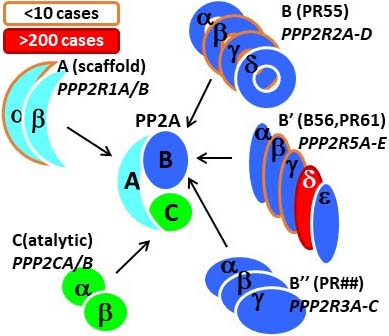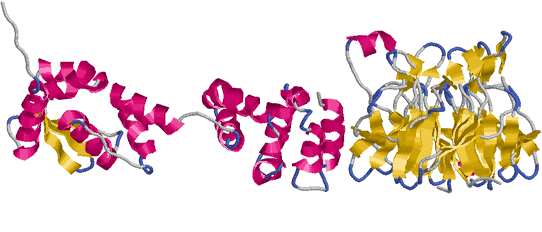Breadcrumb
Other PP2A subunits and KLHL15

PPP2R2B-related neurodevelopmental syndrome
PPP2R2B encodes neuron-specific regulatory subunits of PP2A. The gene gives rise to two major protein isoforms, one targeted to the cytosol (Bbeta1), the other targeted to the outer mitochondrial membrane (Bbeta2). Using knock-out mice and primary neuronal cultures, we have shown that PP2A/Bbeta2 regulates mitochondrial dynamics by activating the mitochondrial fission enzyme dynamin-related protein 1 (PMID: 18940801, 18940801). Bbeta2 KO mice display elongated mitochondria and are protected from ischemic stroke (PMID: 32144179).
Collaborating with clinical geneticists around the globe, we have identified children with de novo, missense mutations in PPP2R2B who present with intellectual disability and developmental delay, seizures, microcephaly, aggression, as well as abnormal motor activity, including broad and stiff gait. We are characterizing these missense mutations biochemically and in primary neuronal cultures in order to investigate their possible link to altered mitochondrial dynamics. In addition, we are exploring links to spinocerebellar ataxia type-12, which is caused by a CAG repeat expansion in PPP2R2B.

KLHL15 in X-linked intellectual disability
We indentified KLHL15 (Kelch-like 15) is a proteomic screen for interactors of the brain-specific PP2A regulatory subunit PPP2R5B (B'beta, B56beta) (PMID: 23135275). KLHL15 is a member of a large (42 genes) family of E3 ubiquitin ligase adators that target specific substrates for ubiquitylation and proteosomal degradation. The best characterized Kelch-like protein is Keap1 (KLHL19) which is a critical regulator of the Nrf2 anti-oxidant response pathway.
I addition to PPP2R5B, KLHL15 also degrades doublecortin (DCX) and doublecortin-like kinases 1/2 (DCLK1/2), proteins involved in the developing brain. Intriguingly, both KLHL15 and DCX are X-linked genes that when lost or mutated, cause severe neurological disoders, suggesting a possible interplay in the developing brain (PMID: 33199366).
Again, in collaboration with Vera Kalscheuer and other geneticists around the globe, we are profiling a growing series of KLHL15 variants that cause X-linked intellectual disability. Intriguing preliminary data suggest that both gain- and loss-of-function of KLHL15 can derail normal brain development.